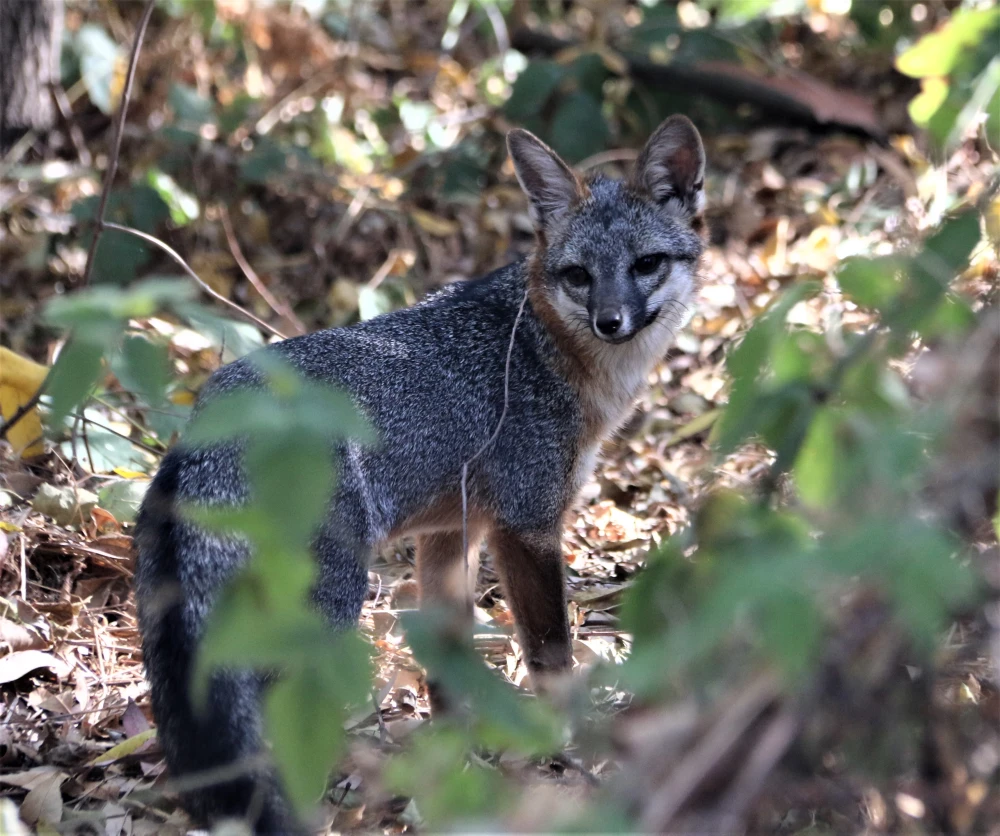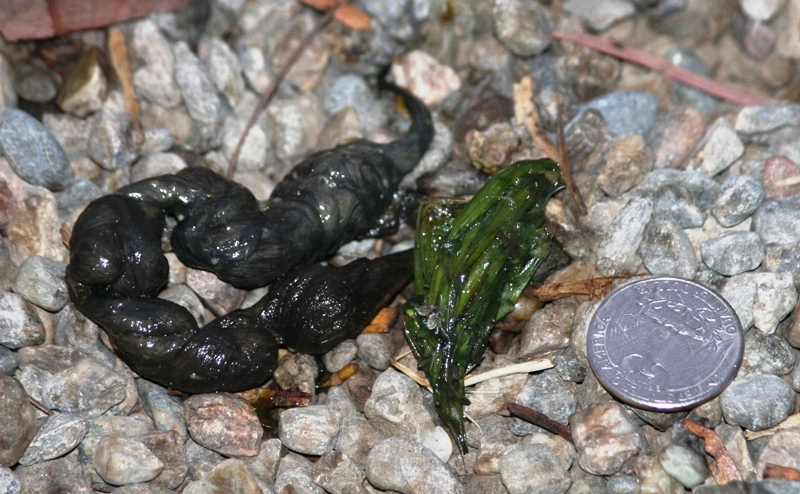Time Change & A Log file
by William C. Leikam
President, CEO & Co-founder, Urban Wildlife Research Project

It’s that time of year again. Here in California, we deal with the shifts between daylight savings time and regular time. In the spring, the foxes also shift their time for it appears to be in preparation to have their young. These time shifts have certainly made getting consistent night videos a problem. Whereas a month or a month and a half ago, the foxes generally left the area from between about 7:30 and 8:30 along one of three different corridors, and during the night they’d pass several trail cameras sometimes as much as 18 times. Now they have dropped back to maybe getting two images of them leaving and returning to their denning area.
Generally speaking, in the evening they’d return upwards of 12 to 13 hours later along that same trail that they left upon. Now, only once or twice per week do they pass one of those cameras, the ones that picks them up on their outbound trek. Those three trails, the ones that they are presently not using as regularly as in the past, are Hummer Trail, Fox Trail, or over the Crossing tree. The rest of the week we don’t know which trail they are using or where they are headed.
This is important information because it can tell us what portion of the landscape they are frequenting and the likely locations that they use to find food. Normally this is dictated at least in part by the food supply in a given area. For instance, if I see Big Eyes and Laimos springing up into the crossing tree that forms a bridge to the north side of Matadero Creek, and then about an hour and a half later they show up at the Fox Hollow Gate near the water treatment plant, I can know fairly well that 1. They are hunting as a pair which is not always the case, and 2. They very likely used the old perimeter road or what I call the backroad to get from A to B. Both combined tell me that they are focusing on the wider region of the baylands to access food.

This following is an actual log entry: A Thief
From the Log – March 2, 2021 – When I came to the top of the trail at camera #11, I saw that the post holding the camera was lying on the ground. Closer and I saw that someone had stolen the camera and broken the post. Whoever it was actually bent the post over, splitting the wood at the base and simply making a mess. They took all of the straps that hold the camera in place as well. In the past, when a camera was stolen the straps had been cut, but not this time suggesting that it was a different thief.
Over in the clearing, I called for the foxes and when I walked along Hummer Trail, I looked over the thicket of berry vines and there was Big Eyes sniffing something. I took several pix of her. She went back under the fallen tree. I swapped out cards from the audio recorder. She watched. She sniffed about. I took more pix. Once I’d shut the clasp on the sound recorder, she turned and walked back into the thicket.
Section II
Update for the Urban Wildlife Research Project
The collaring project needs in excess of $35,000 and here’s the reason why you should consider a donation to UWRP be it $1 or $5,000 so that we can begin the collaring project dedicated to making the baylands along the San Francisco Bay a healthy place for wildlife to live. You can donate through PayPal or Give Direct, our preferred portal for giving. On our website (Urban Wildlife Research Project), check out the short video and go to the donate button nearby. Your donation is tax deductible.
Check out our Facebook page.
Check out our YouTube Channel at https://www.youtube.com/channel/UC5ujc7p8dU1-O5AbPAWz2_Q
Check out Bill’s interview of January 1, 2021, hosted by the Town of Woodside California for their First Friday event at https://youtu.be/QrZzvmrqKTA
Radio interview – KALW (Local PBS) Audio Recording Interviewed by Sofie Kodner during December 2020 – Broadcast 1/11/2021 5:00 PM on PBS’s program Crosscurrents https://www.kalw.org/post/bay-area-wildlife-habitats-are-disappearing-fox-guy-has-plan
Bill had a conversation with John Muir Laws and Marcia Sivek during a drawing workshop featuring the gray fox with the renowned artist John Muir Laws on January 14, 2021. It aired from noon until 1:30 PM. The Gray Fox: Art and Conservation • John Muir Laws
You can access Bill’s PowerPoint presentation Corridors & Connections: Sustaining the Health of All Wildlife presented during the October 24th P-22 Urban Wildlife Festival here: https://www.youtube.com/watch?v=Dh4MQL1D1Cc
NEW – To find out more about us, search Urban Wildlife Research Project, UWRP, gray foxes, wildlife connection, linkages, corridors and several documentaries and clips on https://www.youtube.com/channel/UC5ujc7p8dU1-O5AbPAWz2_Q
If you haven’t had a chance to read some of the articles that have been written about our study of gray fox behavior and our corridor work, click on these links as they will take you to the source: Bill Leikam – The Fox Guy, and Greg Kerekes & URWP
Section III
Gray Fox, Baylands Goals
Within the permit that allows the Urban Wildlife Research Project to conduct its study of the behavior of the gray fox at the Palo Alto Baylands Nature Preserve, the objectives covered area:
- Monitoring of urban gray fox Denning sites in Palo Alto Baylands.
This is being accomplished during the period when the gray foxes use a den site. It is one of the prime locations for gathering most of the behavioral data of the litter and for adults alike.
- Assessment of status and population trends of Baylands urban gray foxes
Since January 2019 a pair of resident gray foxes have claimed territory at the Palo Alto Baylands Nature Preserve.
- Identification of habitat features that promote the presence of urban gray foxes
After considering this and talking with people who know how to restore habitats, we need to assess what kinds of plants, including the Alkaline Salt Bush, would grow best along the edge of the saltwater channel and alongside the marsh. We need to grow a permanent habitat that contains the corridors and plant it as soon as possible. We’ll keep an eye on this as this is a critical link between the southern region of the Baylands and the northern region.
- Assessment of reproductive success and identification of factors that promote successful reproduction
Open up the pinch-point along Matadero Creek by developing thickets that link one area to another, instead of the present “islands”.
- Identification and assessment of possible dispersal travel routes.
Presently there can only be guesses as to dispersal travel routes. We intend to make this important question much more concrete when we attain our collaring/take/capture permit from the Department of Fish & Wildlife.





